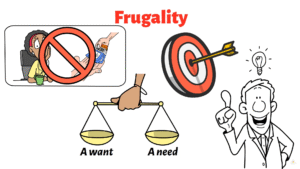Intro
Savings Freedom Formula by IT4Grow reveals rare secrets to wealth: master savings, avoid debt traps, and achieve lasting financial freedom in 2025.
Tired of trading time for money? Dreaming of early retirement, financial freedom, and the ability to pursue your passions? Then you need to understand one of the most important indicators of your ability to achieve just that… your savings rate.
We’ll break down exactly what your savings rate is, why it’s THE most crucial factor in building wealth, and how to dramatically increase yours. So get ready to unlock your financial potential!
What Is A Savings Rate?
What is a Savings Rate? At its core, your savings rate is the percentage of your after-tax income that you consistently set aside and invest. This is extremely important to understand because often times, people assume that if you make more money, then you’re automatically wealthier, but that is not the case.
If you bring home 5K but spend all of it, then you have no way to save and invest, but let’s say you earn $5,000 per month after taxes, and spend only $4,000. Now you’re able to save $1,000. That’ll always be better than someone earning 10,000 a month but spending all of it.
This is not just about how much you earn, it’s about how much you keep. This is about choosing to prioritize your financial future consciously.
Now, here is the place where magic occurs.
Why Is Saving Important?
The real power of your savings rate lies in the magic of compound interest.
Imagine your savings as a growing tree. Each dollar you saved are like planting a seed. Over time, he grows seeds, produces more seeds, and a tree turns into a forest, rapidly expands.
The more you start investing, the more time you will have to increase your money. Even small, frequent savings can snow in a significant fate in decades.
Suppose two people start saving at the age of 25. Steve saves 10% of his income, while Sara saves 30%. Assuming similar investment returns, Sara will deposit a lot of money during her lifetime. This means that the first retirement, the ability to travel to the world, or freedom to pursue its passion without financial obstacles.
How To Calculate?
How To Calculate it? Calculating your savings rate is easier than you might think. Here’s how you do it:
- Track Your Income: This part may be the easiest. Gather all of your income streams, your day job, the part time work you pick up driving for Uber, or the side hustle mowing lawns that you do. Anything that brings in money, make note of it.
- Track Your Expenses: This is where you can use technology to help you. You can use apps like YNAB or Empower to help you get an idea of how much you’re spending where it’s going every month.
- Calculate Total Savings: Combine all of the money that you’re saving or investing. That money you put aside for your emergency fund, include it. Are you investing in an after-tax IRA or 401K, add those numbers as well. Don’t forget any other money you might be investing into a brokerage or even crypto.
- Divide Savings by Income: Now that you’ve got how much money you’re saving and investing, divide that number by your after-tax income. For example, if you’re bringing home $5000 a month after taxes, and you are saving $250 to your emergency fund, putting $500 into your IRA and another $500 into your brokerage, for a total of $1250. Then you divide 1250 dollars by 5000 for a percentage of 25%, which is an excellent savings rate.
How to Increase Savings Rate?
How do you increase it? So now you know your savings rate, but maybe you’re not happy with where it’s at and you want to increase it. Let’s look at a couple of strategies to boost it.
1. Cut Unnecessary Expenses
You could do this in any number of ways. One of the biggest expenses in most people’s budgets is food. Take an audit and see if you can cut this expenditure category.
Plan your meals in advance. This helps you create grocery lists, reduce food waste, and avoid costly bills associated with eating out. That daily takeout lunch, it might seem small, but they add up significantly over time. Find cheaper alternatives or eliminate it altogether.
Entertainment is another budget line item that can always be audited. Go through your bank and credit card statements and take a look at your reoccurring subscriptions. Cancel unused membership for streaming services, gym membership, or any other services. You are not actively used.
Embrace DIY: Instead of hiring someone for small repair or house improvement projects, try to deal with them yourself. You will save money and get valuable skills.
2. Increase Your Income
Now, there’s only so much you can cut out, so at some a point, you’ll have to stop, but the next step has no ceiling.
Explore side hustle opportunities like freelancing, driving for rideshare services, selling crafts online, or even starting a small business. It’s never been easier to make money.
In the same way, invest in yourself and increase your skillset. This could allow you the opportunity to negotiate a raise or even find another job that pays a higher salary.
3. Automate Your Savings
Let’s say you’re making enough to have money to put aside, but you often don’t do it or you’re not doing it consistently. This is where automating your savings can help.
Set up regular transfers from your checking account to your savings and investment accounts. This way, you’re paying yourself first and removing the temptation to spend that money elsewhere.
And don’t forget those employer retirement plans. If your employer offers an employer retirement plan (like a 401k, 403b, or Thrift Savings Plan), contribute at least enough to get the full match, if offered. But even if a match isn’t offered, these plans are tax advantaged, either pre-tax or after-tax, so take advantage of them.
Where To Find The Money?
Where do you find the money? Let’s be honest, even with a solid budget, unexpected expenses can derail your savings goals. And some expenses aren’t exactly unexpected, they’re more impulsive.
So let’s identify some places where you might experience some “money leaks” and how to plug them.
- Unnecessary Fees: Particularly when it comes to bank accounts credit cards, pay close attention to payment dates as well as account levels so that you avoid unnecessary fees like ATM fees, overdraft fees, and late payment fees.
- Impulse Purchases: For most people, this is a large portion of the unexpected expenses in this monthly budgets. You must shop intentionally. Give yourself a moment to take a step back and determine if you need the item you want to buy. Mindful spending is the key to breaking the cycle of impulsive purchases. Learn the difference between needs, essential things like food, shelter, and transportation, and wants, things like dining out, luxury items, and entertainment.
- Keeping Up With The Joneses: Comparison has gotten many people into the trap of debt. Don’t fall into the trick of comparing yourself to others and what they own. Focus on your own financial goals and build wealth on your own terms.
How to Stay Motivated?
How to stay motivated? Building a robust savings rate won’t happen overnight. Much like wealth, it’s a marathon, and not a sprint. So staying motivated is crucial.
Track you progress by setting milestones, and reward yourself a little when you hit your goal. This not only inspires you, but it confirms positive behavior and habits.
Write your goals and imagine your financial future. Imagine freedom and possibilities that come with financial security. Use this vision as a powerful motivator to stay disciplined and consistent.
Write the goals you have, the things you want to complete, and the places where you want to go.
All of these things will help you stay motivated over the long run.





